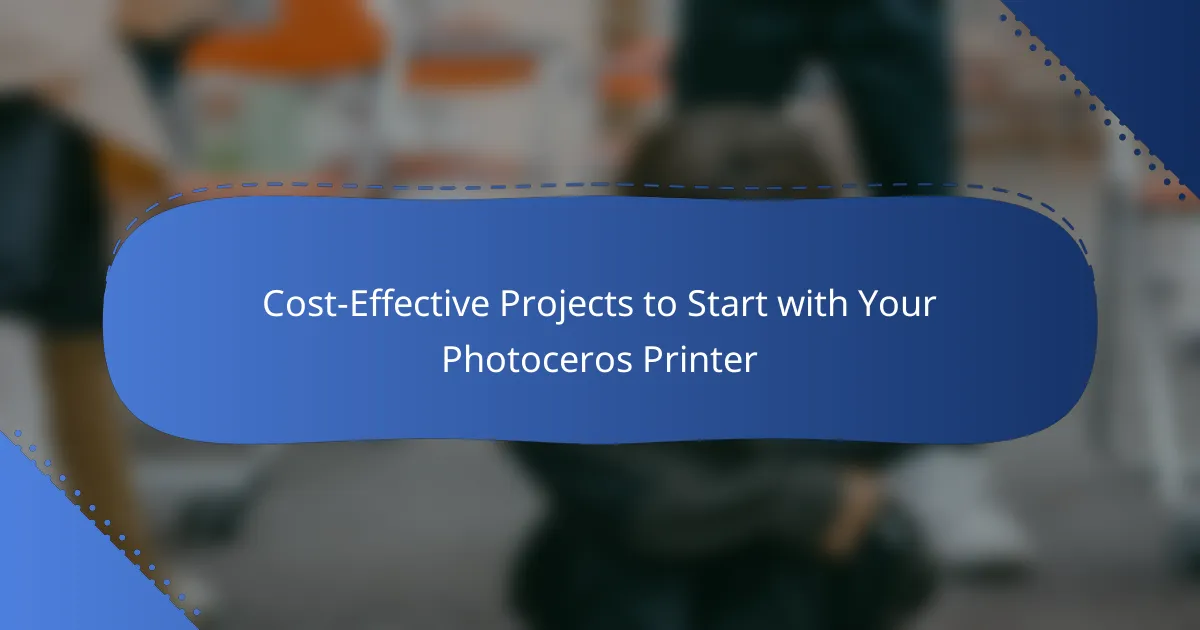With your Photoceros printer, you can embark on a variety of cost-effective projects that cater to both personal interests and market needs. From creating customized jewelry and personalized home decor to developing prototypes for small businesses, these projects leverage the printer’s capabilities while offering unique opportunities for creativity and entrepreneurship.
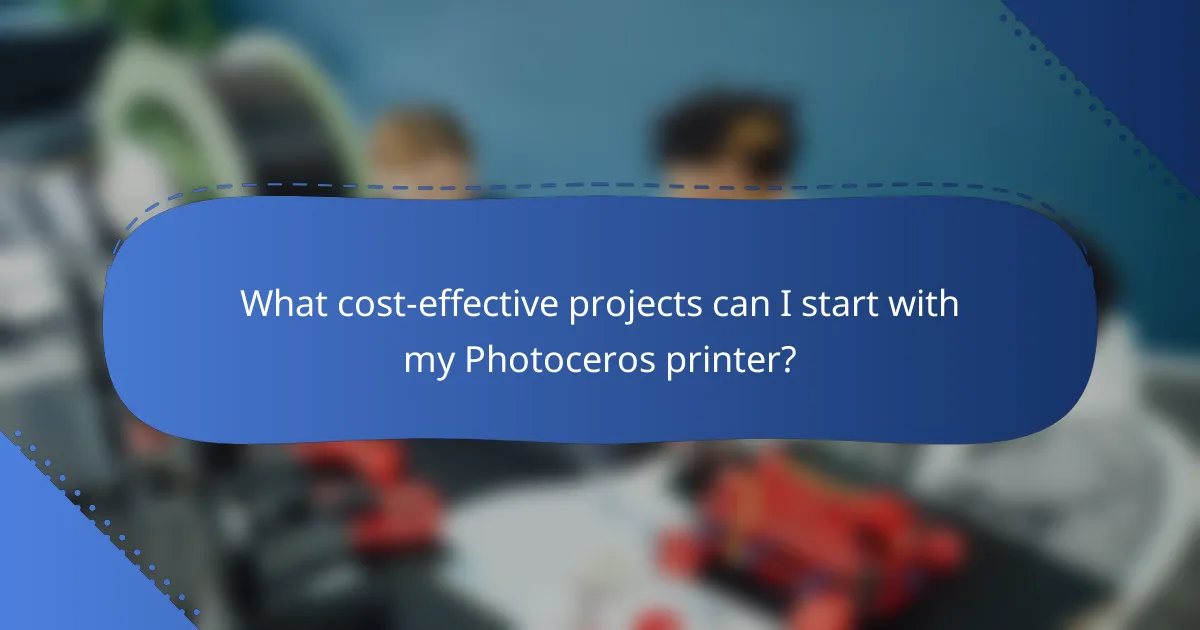
What cost-effective projects can I start with my Photoceros printer?
You can start various cost-effective projects with your Photoceros printer, including customized jewelry, personalized home decor, prototypes for small businesses, educational models, and unique promotional products. These projects not only allow you to utilize your printer’s capabilities but also cater to diverse markets and personal interests.
Customized jewelry design
Creating customized jewelry with your Photoceros printer can be both fun and profitable. You can design rings, necklaces, and earrings tailored to individual preferences, using materials like resin or metal. Consider offering designs that reflect current trends or personal milestones, such as birthdays or anniversaries.
When starting, ensure you have a good understanding of jewelry design software and the types of materials your printer can handle. Offering a range of styles, from minimalist to intricate, can attract a broader customer base.
Personalized home decor items
Your Photoceros printer can produce unique home decor items, such as custom wall art, vases, or decorative figurines. These projects can be tailored to fit various aesthetics, from modern to rustic. Personalization options, like adding names or meaningful quotes, can enhance the appeal.
To maximize your offerings, consider seasonal themes or collaborations with local artists. This not only diversifies your product range but also supports the local creative community.
Prototyping for small businesses
Small businesses can benefit significantly from using a Photoceros printer for prototyping. Whether it’s product packaging, custom parts, or promotional materials, rapid prototyping can save time and costs. This allows entrepreneurs to test ideas quickly and make necessary adjustments before full-scale production.
Focus on creating prototypes that are functional and visually appealing. Offering a service where you help refine designs can further establish your value to small business clients.
Educational models for schools
Schools often seek innovative ways to engage students, and your Photoceros printer can help create educational models. These can include anatomical models, historical replicas, or scientific diagrams that enhance learning experiences. Such projects can be tailored to various age groups and subjects.
Collaborate with educators to understand their needs and develop models that align with curriculum standards. Offering bulk discounts for schools can also encourage larger orders.
Unique promotional products
Using your Photoceros printer, you can create unique promotional products for businesses, such as branded keychains, coasters, or custom awards. These items can serve as effective marketing tools, helping companies stand out at events or in giveaways.
Consider the target audience and the message that the promotional items should convey. Offering a variety of materials and customization options can increase the attractiveness of your products to potential clients.
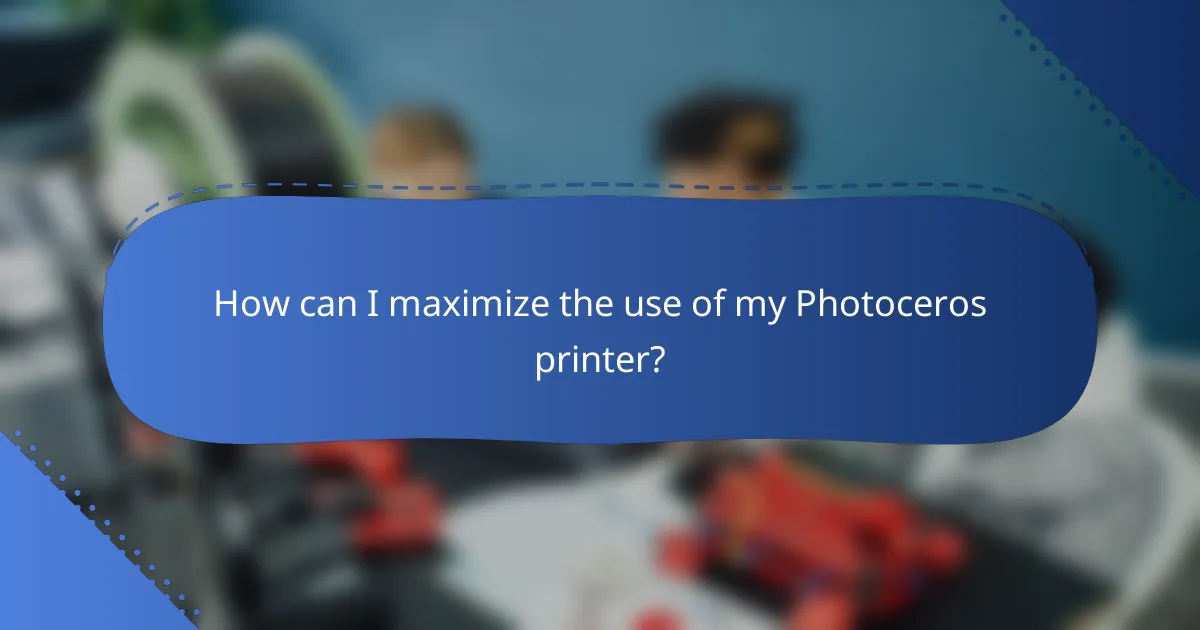
How can I maximize the use of my Photoceros printer?
To maximize the use of your Photoceros printer, focus on exploring diverse materials, utilizing various design software, and implementing efficient printing techniques. These strategies can enhance your printing capabilities and expand the range of projects you can undertake.
Utilizing different materials
Experimenting with various materials can significantly enhance the versatility of your Photoceros printer. Consider using options like cardstock, vinyl, or specialty papers to create unique products such as custom stickers, greeting cards, or promotional materials.
When selecting materials, ensure they are compatible with your printer specifications to avoid issues. Look for materials that are readily available in your local market, and consider bulk purchasing to reduce costs.
Exploring various design software
Using different design software can help you unlock the full potential of your Photoceros printer. Programs like Adobe Illustrator, CorelDRAW, or even free options like Inkscape can provide advanced design capabilities that enhance your projects.
Familiarize yourself with the software’s features, such as vector graphics and layering, to create more intricate designs. Online tutorials can be a valuable resource for learning how to maximize these tools effectively.
Implementing efficient printing techniques
Efficient printing techniques can save time and reduce material waste. Start by optimizing your print settings based on the type of project, adjusting factors like resolution and color management to suit your needs.
Consider batch printing similar items to minimize setup time and maximize output. Additionally, regularly maintain your printer to ensure it operates smoothly, which can prevent costly downtime and enhance print quality.
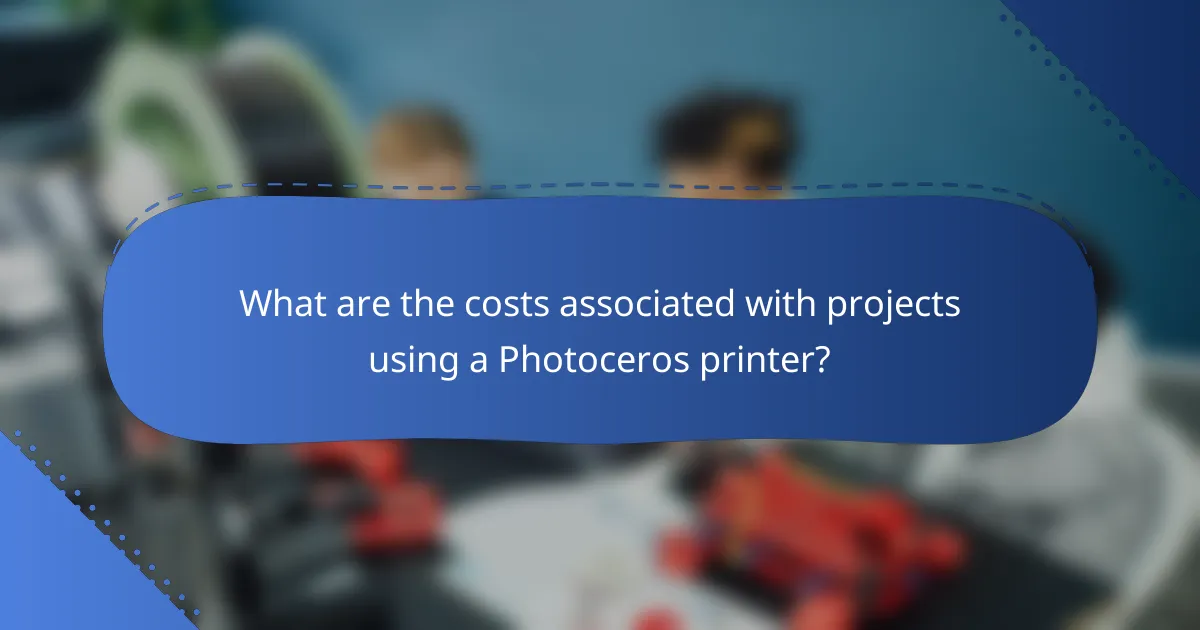
What are the costs associated with projects using a Photoceros printer?
Projects utilizing a Photoceros printer involve several costs, including material expenses, maintenance, and software licensing fees. Understanding these costs can help you budget effectively and maximize the value of your printing projects.
Material costs
Material costs for a Photoceros printer typically include the price of resin, build plates, and any additional supplies needed for post-processing. Resin prices can vary widely, often ranging from $50 to $150 per liter, depending on the type and quality.
When estimating material costs, consider the size and complexity of your prints. Larger or more intricate designs may require more resin and additional supports, which can increase overall expenses. Always factor in the cost of consumables like gloves and cleaning solutions as well.
Maintenance expenses
Maintenance expenses for a Photoceros printer can include routine cleaning, replacement parts, and potential repairs. Regular maintenance helps ensure optimal performance and can prevent costly breakdowns.
Budgeting for maintenance is crucial; set aside around 10-15% of your initial investment in the printer annually. This can cover items such as replacement filters, UV lamps, and any necessary upgrades to keep your printer running smoothly.
Software licensing fees
Software licensing fees are another consideration when using a Photoceros printer. Depending on the software you choose for slicing and preparing your models, costs can range from free options to several hundred dollars for professional-grade software.
Evaluate the features you need and consider whether a subscription model or a one-time purchase is more cost-effective for your projects. Some software may offer discounts for educational or bulk licenses, which can help reduce overall costs.
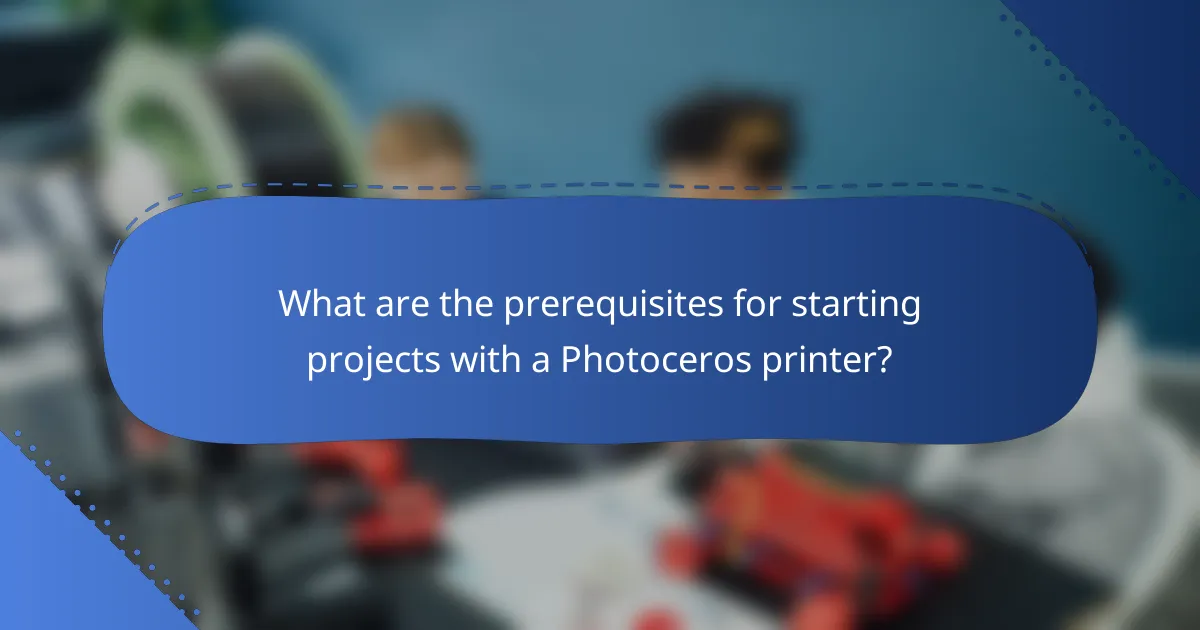
What are the prerequisites for starting projects with a Photoceros printer?
To start projects with a Photoceros printer, you need to understand its capabilities, possess basic design skills, and have access to suitable design software. These prerequisites will help you maximize the printer’s potential and create high-quality outputs.
Understanding printer capabilities
Familiarizing yourself with the capabilities of your Photoceros printer is essential. This includes knowing the types of materials it can print on, the maximum print size, and the resolution it can achieve. Understanding these features allows you to select appropriate projects that align with your printer’s strengths.
For example, if your printer excels at high-resolution outputs, consider projects that require detailed graphics or intricate designs. Conversely, if it is limited to specific materials, avoid projects that demand versatility in media.
Basic design skills
Having basic design skills is crucial for creating appealing projects with your Photoceros printer. This includes understanding design principles such as color theory, composition, and typography. These skills will enhance the visual quality of your printed materials.
You don’t need to be a professional designer, but familiarity with design concepts will help you make informed decisions when creating your projects. Simple tools like templates can also assist in achieving a polished look without extensive design knowledge.
Access to design software
Access to design software is necessary for preparing your projects for printing. Programs like Adobe Illustrator, CorelDRAW, or free alternatives such as Inkscape can help you create and edit designs effectively. Ensure the software you choose is compatible with the file formats your Photoceros printer accepts.
When selecting design software, consider your budget and the complexity of your projects. Many software options offer trial versions, allowing you to explore their features before committing to a purchase. This can help you find the right fit for your design needs without overspending.

How do I choose the right project for my Photoceros printer?
Choosing the right project for your Photoceros printer involves understanding your target audience, evaluating current market trends, and considering production time. These factors will help you select projects that are not only feasible but also profitable and appealing to your customers.
Assessing target audience needs
To effectively assess your target audience’s needs, start by identifying who will benefit from your printed products. Conduct surveys or engage with potential customers through social media to gather insights on their preferences and pain points.
Consider creating personas that represent different segments of your audience. This can help you tailor your projects to meet specific demands, whether it’s custom designs for businesses or unique gifts for individuals.
Evaluating market trends
Stay informed about market trends by following industry news, attending trade shows, and analyzing competitors. Look for emerging trends that align with your capabilities and the interests of your audience.
Utilize tools like Google Trends or social media analytics to gauge what types of products are gaining popularity. This will help you make informed decisions about which projects to pursue, ensuring they resonate with current consumer interests.
Considering production time
Production time is a crucial factor in project selection. Assess how long each project will take from concept to completion, including design, printing, and finishing processes. Aim for projects that can be completed within a reasonable timeframe to maximize efficiency.
For instance, simple designs may take a few hours, while more complex projects could require several days. Balance the complexity of the project with your available resources to ensure timely delivery to your customers.
